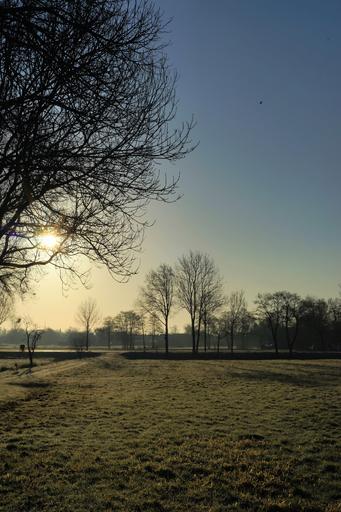Abstract Portraits as a Reflection of Modern Artistic Choices
Introduction
In the world of art, portraits have always held a special place. They capture not just the likeness of an individual but also reflect their personality, emotions, and sometimes even societal commentary. In recent years, abstract portraits have emerged as a powerful form of expression, showcasing how modern artistic choices can reshape our understanding of identity and aesthetics. This article delves into the various facets of abstract portraits as a reflection of modern artistic choices, exploring their significance in contemporary art, photography techniques, and their role in home decor.
Abstract Portraits as a Reflection of Modern Artistic Choices
Abstract portraits serve as an intriguing intersection between traditional portraiture and modern artistic experimentation. Unlike conventional portrayals that focus on realistic representation, abstract portraits liberate the essence of the subject through colors, shapes, and forms that evoke emotion rather than mere likeness. This shift represents a broader trend in art where self-expression is prioritized over accuracy.
1. The Evolution of Portrait Styles
The history of portraiture dates back centuries, evolving from lifelike representations to more stylized forms. Today’s artists often draw inspiration from various movements such as Impressionism and Expressionism to craft works that resonate emotionally with viewers.
1.1 Traditional vs. Modern Portraiture
Traditional portraiture aimed for realism—capturing every detail meticulously. In contrast, modern approaches like abstract portraits embrace imperfection and abstraction:
- Focus on Emotion: Artists prioritize feelings over physical characteristics.
- Experimentation with Form: Non-representational shapes often dominate.
- Bold Color Choices: Vibrant palettes are used to invoke specific moods.
2. Aesthetic Photography in Abstract Portraits
Aesthetic photography plays a crucial role in creating stunning abstract images that push boundaries. The fusion of photography techniques with fine art practices has led to mesmerizing results.
2.1 Techniques in Aesthetic Photography
Several techniques enhance the aesthetic quality of abstract portraits:
- Lighting Manipulation: Dramatic lighting creates mood.
- Depth of Field Control: Blurring backgrounds draws attention to subjects.
- Color Grading: Post-processing techniques alter color palettes for desired effects.
3. Self-Portrait Photography: A Personal Exploration
Self-portrait photography allows artists to explore their identities through abstract forms. This genre challenges conventional norms by offering personal narratives embedded within abstract representations.
3.1 The Role of Vulnerability in Self-Portraits
Artists often confront their insecurities through self-portraits:
- Introspection: Examining one’s emotions leads to deeper artworks.
- Authenticity: Unfiltered expressions resonate more with audiences.
4. Contemplative Photography: Exploring Identity Through Abstraction
Contemplative photography focuses on deep observation and mindful engagement with subjects—integral when crafting abstract portraits.
4.1 Mindfulness Techniques for Artists
Incorporating mindfulness can elevate artistic practice:
- Observation Skills: Enhancing one’s ability to see beyond physical traits.
- Emotional Awareness: Tuning into personal feelings while creating art.
5. Emotional Reflection in Art: The Heartbeat of Abstract Portraits
Emotions are at the core of any successful artwork, particularly in abstracts where feelings often take precedence over form.

5.1 Decoding Emotional Elements in Abstract Works
Analyzing emotional content involves looking at various components:
| Element | Impact | |------------------|----------------| | Color Palette | Evokes specific emotions | | Brush Strokes | Suggest movement contemplative photos or stillness | | Composition | Guides viewer's eye |
FAQs
1. What are abstract portraits?
Abstract portraits are artworks that represent subjects through non-traditional forms—focusing on emotion and concept rather than realistic accuracy.
2. How do aesthetic trends influence portrait styles?
Aesthetic trends shape how artists interpret their subjects by promoting diverse approaches—encouraging exploration beyond conventional methods.
3. What role does color play in abstract portraiture?
Color serves as a key element by evoking emotions and setting the tone for the piece; it can dramatically alter perception and engagement.
4. Can abstract portraits be used as home decor?
Absolutely! Abstract portraits can enhance home aesthetics by adding vibrancy and depth to spaces—serving both decorative and emotional purposes.
5. What are some popular photography techniques for creating abstract portraits?
Popular techniques include dramatic lighting manipulation, creative depth-of-field adjustments, and intentional color grading during post-processing.
6. Are faceless portraits considered a form of abstract art?
Yes! Faceless portraits often embody abstraction by focusing on other visual elements (like color or texture) rather than facial features—inviting viewers to engage imaginatively with the artwork.

Conclusion
The exploration of Abstract Portraits as a Reflection of Modern Artistic Choices reveals how much contemporary artists value emotional expression over traditional representation techniques. As they embrace innovative methods—from aesthetic photography to self-expression through contemplative practices—they redefine what portraiture means today.
Artists create not merely images but visual dialogues that invite viewers into their internal worlds while challenging preconceived notions about identity, beauty, and meaning in art forms themselves.

As we continue to witness these shifts within artistic communities globally, it's imperative for us—as observers—to allow ourselves the freedom to experience these works authentically while appreciating the profound connections they forge between artist and audience alike.